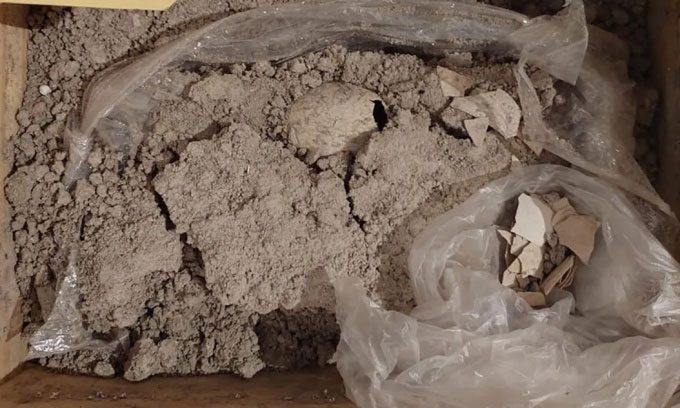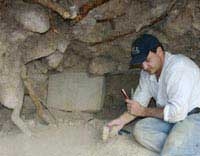Fossilized flamingo egg measures 93.491mm in length and 55.791mm in width, with exceptionally well-preserved patterns.
Experts discovered a fossilized ancient flamingo egg near the Felipe Ángeles International Airport construction site in Santa Lucía, Mexico, as reported by IFL Science on August 4. This marks the second recorded instance of fossilized flamingo eggs worldwide and the first of its kind found in the Americas.

Fossilized flamingo egg discovery in Mexico. (Photo: José Alberto Cruz Silva/INAH)
Finding fossilized eggs from any bird species in the Pleistocene Epoch (also known as the New Stone Age, which occurred approximately 2.6 million to 11,700 years ago) in both North and South America is extremely rare. Eggs from extinct species such as albatrosses, pelicans, and cranes have been sporadically found across the Americas, but fossilized flamingos are typically confined to ancient lakes in Central Mexico. Modern flamingos are distributed in North America, far from these ancient lakes along the Yucatán Peninsula and the southeastern United States.
Flamingos belong to the family Phoenicopteridae, and prior to this discovery in Mexico, the only known Phoenicopteridae eggs in the world were five eggs found in Spain. Based on other remains found at the same site, the egg found in Mexico is likely from the late Pleistocene or early Holocene (also known as the Current Epoch, which spans from 11,700 years ago to the present).
To determine that the egg belonged to a flamingo, the research team compared its size, width, shell texture, and overall shape with other species to identify which group of animals could have laid it. The egg measures 93.491 mm in length and 55.791 mm in width at its widest point. The patterns on the egg are exceptionally well-preserved and resemble those of a swan egg, although swan eggs are much larger.
By comparing these factors with eggs from various species, the research team concluded that this is indeed a flamingo egg and not one from a crane or other species. The findings were recently published in the journal Historical Biology.
According to the research team, the presence of flamingo eggs indicates that a high-salinity ancient lake once existed at the location where it was found during the late Pleistocene. A nearby site named Lake Chalco, dated between 12,000 and 8,000 years ago, also provides evidence that flamingo eggs existed during this period.





















































